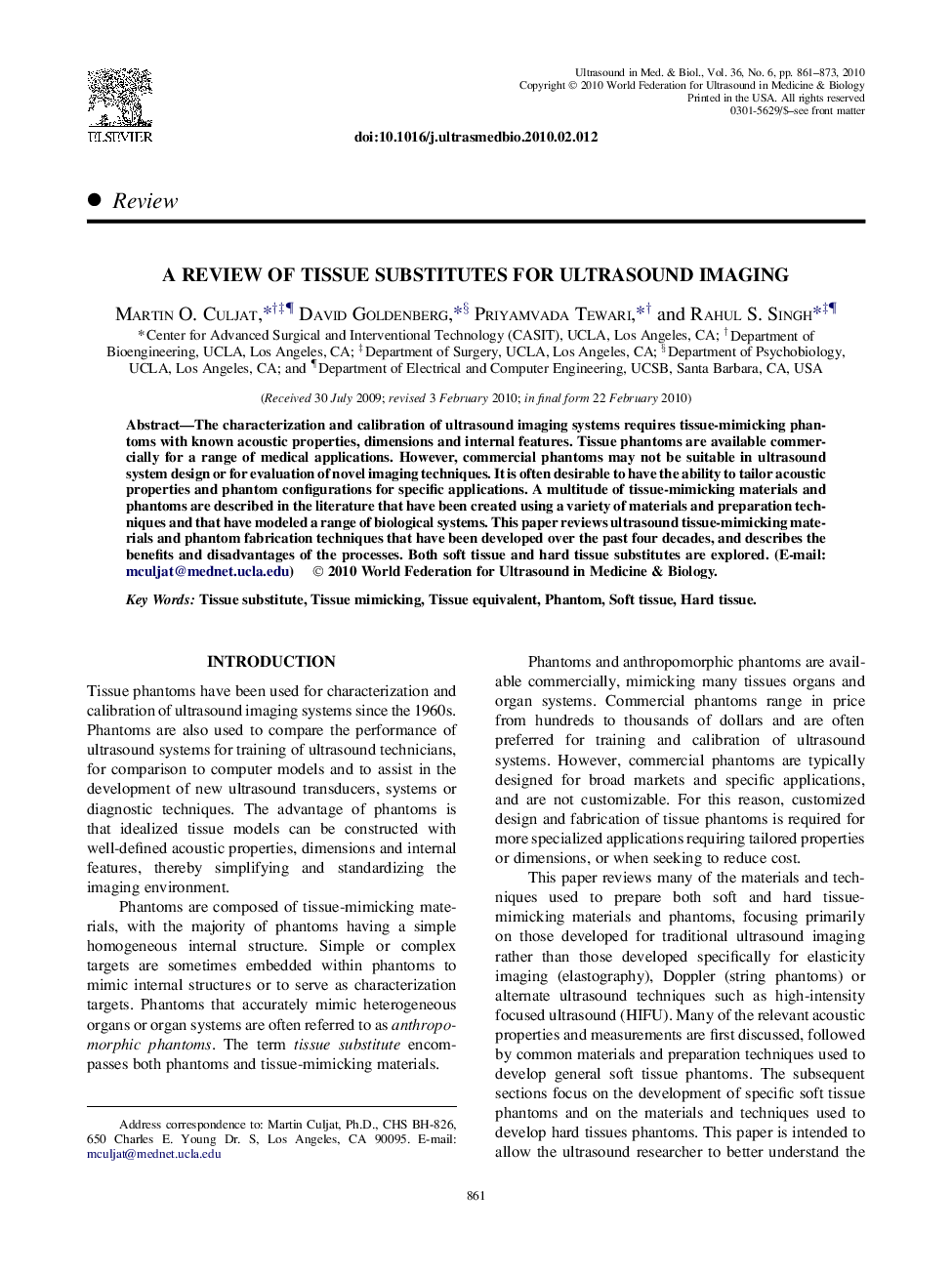| Article ID | Journal | Published Year | Pages | File Type |
|---|---|---|---|---|
| 1761792 | Ultrasound in Medicine & Biology | 2010 | 13 Pages |
Abstract
The characterization and calibration of ultrasound imaging systems requires tissue-mimicking phantoms with known acoustic properties, dimensions and internal features. Tissue phantoms are available commercially for a range of medical applications. However, commercial phantoms may not be suitable in ultrasound system design or for evaluation of novel imaging techniques. It is often desirable to have the ability to tailor acoustic properties and phantom configurations for specific applications. A multitude of tissue-mimicking materials and phantoms are described in the literature that have been created using a variety of materials and preparation techniques and that have modeled a range of biological systems. This paper reviews ultrasound tissue-mimicking materials and phantom fabrication techniques that have been developed over the past four decades, and describes the benefits and disadvantages of the processes. Both soft tissue and hard tissue substitutes are explored. (E-mail: mculjat@mednet.ucla.edu)
Related Topics
Physical Sciences and Engineering
Physics and Astronomy
Acoustics and Ultrasonics
Authors
Martin O. Culjat, David Goldenberg, Priyamvada Tewari, Rahul S. Singh,
